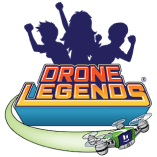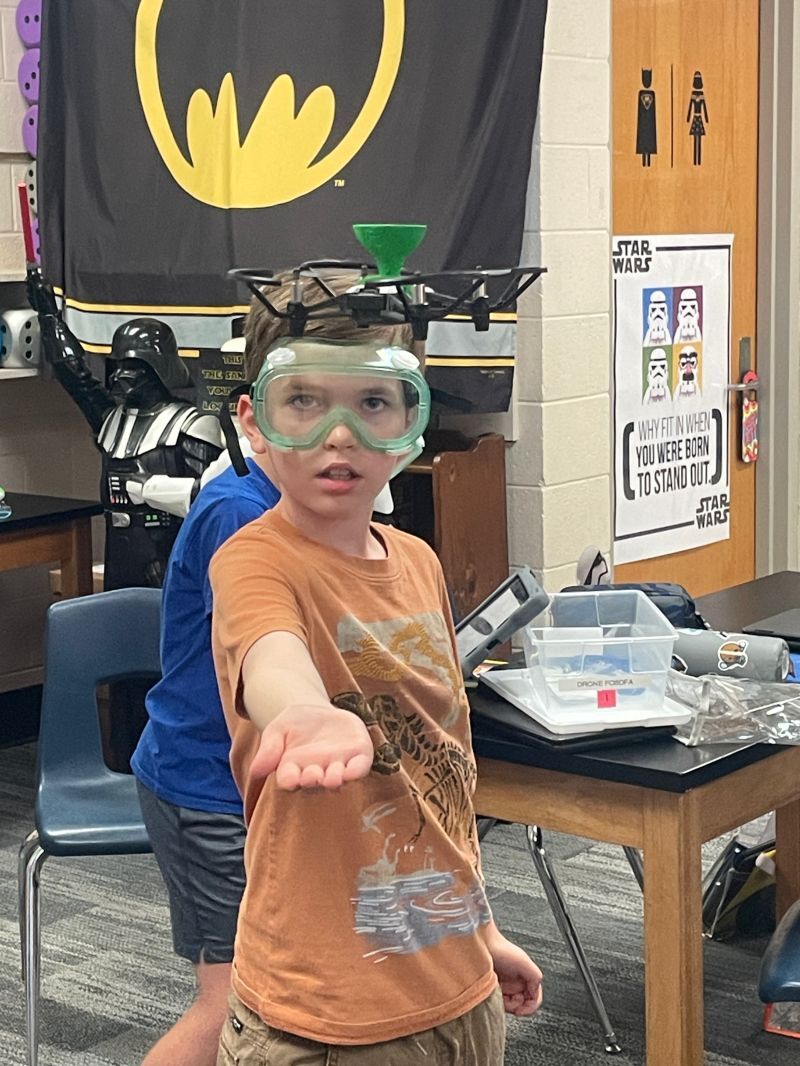The Drone Legends team recently interviewed Laura Spence, the Director of Curriculum and Instruction who has a background as an international educational consultant, and a K-12 STEM program specialist. We discussed how school districts, schools, and educators could use funds to access quality STEM resources. We asked Laura how school districts can play a vital role in acquiring STEM funds to establish, maintain, or enhance STEM offerings. Here’s what Laura shared.
What’s the first step for school districts if they want to secure funds for STEM programs?
Different approaches can be taken depending on the role one serves within a school district. District leadership is going to approach it differently than administrators or teachers would, but teachers have a great platform for using their position as educators to acquire smaller funds that can still make a big impact.
When districts are looking for funding to establish or maintain a district-wide STEM program, one approach is to establish industry partnerships with companies looking to hire their graduates. Many companies have funding for outreach but need guidance to see how their funding can create a pipeline of graduates with in-demand employable skills. To reduce this barrier, districts need to develop a STEM roadmap that identifies annual actionable goals and long-term initiatives driven by innovative approaches to learning, stakeholder engagement, accelerated student achievement, and performance indicators.
When working as a VP of Corporate and Community Outreach for an EdTech company and as an international STEM consultant, I’ve always focused on how to best utilize industry and higher ed. partnerships to create innovative STEM programs that produce graduates with employable skills and are globally competitive. When conducting outreach to acquire funds to develop a STEM program, one should always ask themselves; Is this program and/or partnership going to positively impact students’ lives? If you’re not using this question to drive your initiative to develop a STEM program, you’re missing a big opportunity. Stakeholders need to be shown how YOUR STEM program is scalable, how resources (funding, personnel, time, etc.) will be utilized, and most importantly, how their support can positively impact student lives.
Once districts have a plan, what’s the best way for them to approach organizations in the community?
Elevating STEM skills needed for systematic change requires involvement from small local start-ups to large corporations and everything in between. Once a district is clear about the “why” and “how” of its STEM framework, districts should then develop a partnership/sponsorship package. This type of promotional collateral should address the various types of involvement and funding levels, employee engagement opportunities, curriculum development (if interested), event collaboration, marketing and communication strategies, and partnership duration.
Districts need to become advocates for themselves by hosting industry partnership forums. Forums are a great way to get industry and community leaders to the table to share existing labor market data and gaps in employment skills. If districts present themselves as workforce problem solvers who, if partnered with the right companies, can produce graduates that are workforce capable, sustainable education-industry partnerships can be established.
How have you seen this work in your own experience as a STEM specialist?
While serving as the K-12 STEM Specialist for the 26th largest school district in the nation, I’ve found real success marketing the STEM program I developed as a solution companies want to tap into. I leveraged their funding and resources to create large-scale STEM opportunities that had a substantial impact on student achievement. The program I created had an 8-year impact with 1,400 educators employed, 90 sites, 1,600 programs, 22,000 students enrolled, and the allocation of $1.3 million in grant funding. This would not have been possible if I didn’t engage industry and community leaders on a monthly basis. I used marketing and communication strategies to highlight partnerships because it brought positive coverage for companies I was working with as well as the school district. This in turn increased the number of companies that wanted to get involved.
Another way districts can acquire funding is by partnering with higher ed institutions. Many colleges and universities frequently submit STEM grant proposals that need to be tied to initiatives such as social impact, emerging technologies, underrepresented populations, and the development of advanced math and science curriculum. For example, if you’re starting a drone program, students might be using drones or completing a summer program on campus.
Educators are a great resource to help schools acquire funding for enrichment and extended school-day STEM programs. Many local companies offer mini-grants focused on community impact. These types of companies welcome the opportunity to partner with schools because it allows them to bridge the gap between their employees and the communities they serve. For example, if a teacher wants to bring a Drone Legends program into their school but lack the necessary funding, grants are a great way for teachers to purchase quality drone materials and curriculum to help elevate the skills and aspirations of the students they teach.
How can teachers be involved in the process of finding funds and resources for these programs?
There are tons of grants out there that go unused each year from educational companies to the U.S. Department of Education. It would be great if every educator could take a proactive approach to applying for grants, but they have so much on their plates. It’s essential they work with their administrator to develop a STEM Action Plan. This action plan should focus on accessing quality STEM materials to create educational opportunities designed to increase student achievement.
For many educators, it’s overwhelming to figure out where to begin and how to get approval for programs. My suggestion is to start small. Social media is a great outlet to search and apply for funding with many online applications that require only a fraction of the information needed compared to national grant requirements. It also affords educators with a platform to request supplies on such a large scale. People love to support educators who have a “call to action” and are looking for support from their community to establish or enhance STEM offerings for their students.
What is the process from start to finish of what this looks like?
There’s no real template for success when it comes to acquiring funding as it’s specific to the type of STEM program needed, the employment landscape surrounding the district, the number of students participating, and many other factors. However, the passion to create change on a large scale makes all of the hard work pay off.
When I’ve been tasked with creating a STEM program from the ground up for a country, a school district, or a company, I start by focusing on outcomes. What do I want this program to look like during years one, two, and three? I then backtrack to see what processes need to be in place for the program to be effective and with effective, I mean….increased academic achievement and personal growth for students participating in the STEM program.
With student outcomes in place, I develop a two-page document that includes some of the following:
- Mission and Vision
- Target population(s)
- Explanation of how this program can help fill core content gaps and increase exposure to career pathways
- Explanation of how it can help increase student achievement and students’ ability to problem solve and communicate solutions effectively
- What the students will be engaged with during the program
- Alignment of standards
- Measurement of success processes and procedures
- Partnership opportunities
There are other instances when I add a materials section to my promotional two-page document. This section highlights how the materials, kits, and curriculum will be used to increase awareness of college and career pathways.
Here’s an example, if you wanted to use drones in your STEM extended school day program, you need to identify career pathways that use drone pilots (this is not a comprehensive list):
- disaster relief and rescue operations
- real estate: aerial photography
- animal migration tracking
- farming
- construction
- architecture
The more connections you can authentically highlight, the stronger your evidence will be as to WHY companies need to get involved with your program and WHY kids should participate.
How does CTE (Career Technical Education) Funding Tie In?
With CTE, you’re looking at large amounts of funding tied into career pathways and in-demand workforce skills. These funds take a lot of long-term planning and typically happen at the district level. For a starting point, districts should look at how their CTE courses and program pathways align with state standards. They can also look at how they align with approved CTE courses programs and courses. Each course should be driven by industry demand and offer evidence to support this alignment.
If districts, educational leaders, and administrators want to develop a course that utilizes drones, 3D printers, and robotic kits, you need to use your state’s approved CTE pathways to drive this initiative. There’s a wealth of funding for CTE programs, especially in the past couple of years. These programs can be large and take advanced preparation, planning, and time. However, the opportunity to develop students who are workforce ready and globally competitive is well worth it.
Drone Legends + STEM Education
Getting funding for STEM resources is an important first step to providing students with the highest-quality education possible. Drones and STEM education go hand-in-hand and offer an excellent way to engage students inside and outside the classroom.
Even in elementary school, students can benefit from STEM learning and that’s why we developed curriculum suited for students from 4th grade to 8th grade.
Ready to see how drones can impact students in STEM education? Check out our programs here.




